Chris Cooper's Blog, page 26
November 15, 2024
Gym-Biz Myths That Need to Die Today
Fitness myths must die:
“This cream melts fat.”
“This movement turns fat into muscle.”
“Add 10 lb. of lean muscle in five days.”
And so on.
Here’s another bad one—it’s actually a gym killer:
“You’ll be super profitable if you get 300 members and run big classes with 12 people from dawn to dusk!”
Here’s the problem: Gym owners know fat-melting creams are BS, but many of them still swallow hooks thrown out by “business experts” who don’t have a shred of data to back up their claims.
Two-Brain has been busting business myths with data for years, and I’m going to give you a peak inside our 2024 “State of the Industry” report so you can see the power of real numbers.
If you want to review the entire report and use it to evaluate the health of your gym, you can get it here: “State of the Industry.”
The No-Data Daisy Chain of Doom
“Get 200 clients and be profitable” is a fool’s errand that creates all sorts of errors.
I’ll lay out some problems, then show you real-life numbers and give you solutions based on hard data.
Here’s a very common daisy chain of errors that are triggered by the myth that you need 200-300 members to be profitable selling big-group fitness:
You’re focused on volume, so you use low rates to get members, and you just can’t turn a profit.You always need more clients, so you don’t focus on retention.You spend lots of money on ads for challenges and similar gimmicks but don’t have an airtight onboarding plan because you just want to get these people into classes ASAP.You think you’ll have huge classes, so you rent a monster space and fill it will a mountain of gear.You run classes from 5 a.m. to 5 p.m. and work 14-hour days yourself, or you’re desperate for staff so you build an army of modestly skilled part-timers who trade coaching for membership (and reduce your tally of paying clients).You pay other coaches $25 or $30 to run classes that bring in $20 in revenue.Your full-time trainers can’t earn enough coaching classes to develop careers that support families, so they leave to work in other fields.Your high-churn gym is burning through the market, and it’s getting harder and hard to generate warm leads.
I’ll stop here even though I could go further.
Everything I laid out here is common when a big-group gym owner tries to build a business on a myth. I have seen all this played out too many times in the real world, and all too often these errors are fatal.
Think about just one aspect for a minute: You plan to serve 300 people so you rent a 9,000 square-foot space for five years and buy 30 barbells, but you don’t create a masterful marketing, onboarding and retention plan. So you end up with classes of seven that require just 2,500 square feet (or less). Your cash is tied up in gear that’s acquiring dust, and your lease is bleeding you out month by month.
Let’s look hard at reality.
Our 2024 survey of gym owners produced this stat on client count:

Just so it’s clear: Half of all gyms surveyed have 122 clients or fewer. Fifty percent.
If the average big group gym (CrossFit, HIIT, bootcamp, etc.) has 122 members, it doesn’t need seven coaches plus the owner to serve its clients. And it probably doesn’t need a cavernous warehouse and a fleet of air bikes and rowing machines.
I don’t like “probably,” so let’s go back to the data, this time from Wodify, which analyzed thousands of gyms to produce these stats for us:

Clarity: Across all of Wodify’s gyms, fewer than seven clients attend the average class.
I’ll go one step further. Here’s our survey respondents’ average revenue per member per month (ARM):

So if a gym has about 122 clients at $167 a month, can the owner cover the bills and earn a good living—say, $100,000 a year?
Not if they lease 8,000 square feet, spend lots of money on ads and hire too many coaches.
What if they leased 3,000 square feet, acquired and held high-value clients with surefire referral and retention plans, and used personal training and other services to drive ARM up to $250 a month?
One more question: What if they served 240 members with group, PT and nutrition for an ARM of $250 a month, and the owner paid two full-timers $50,000-$75,000 a year to deliver service in 5,300 square feet? (Answer, based on more data: That owner could become a millionaire.)
Use Numbers, Do Science
This is how data sinks myths and helps you get real results.
You tell your clients to ignore the late-night infomercials and trust you to help them lose weight with a proven, sustainable plan delivered by an experienced pro.
Same deal here. I’m telling you to ignore too-good-to-be-true nonsense and myths from the Dark Ages of the fitness industry.
You no longer have make guesses and pray or waste your trust on snake-oil salespeople who promote unproven plans. You can check their work, call their bluffs and run your own numbers to find truth.
Two-Brain will always help you do that.
Use numbers.
Do science.
Evolve.
Here are the numbers you need to build a strong, thriving gym business in 2025: “State of the Industry.”
The post Gym-Biz Myths That Need to Die Today appeared first on Two-Brain Business.
November 14, 2024
State of the Industry Release Show With Sevan Matossian
To watch this episode on YouTube, click here.
The post State of the Industry Release Show With Sevan Matossian appeared first on Two-Brain Business.
November 13, 2024
Good Business Is a Science
You didn’t start a gym to learn accounting. Neither did I.
You started a gym to help people. Me, too.
Coaches and gyms are needed more than ever. For the first time in history, human lifespan is shortening. We’re getting sicker and weaker as we age—for many, the last decade of life is the worst decade. Our problems are now problems of abundance: We have too much couch time, too much distraction, too much sugar. We have more knowledge than ever before, and we’re getting sicker.
The solution isn’t another fitness book about diet. The solution is coaching. And every year, 10,000 new personal trainers and coaches and gym owners join the movement.
But every year 9,000 of them quit. They don’t quit because they’ve lost their passion, and they don’t quit because they’re burned out or bored.
They quit because they’re out of money.
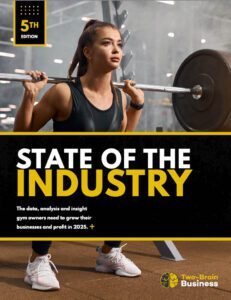 Get our 2024 report!
Get our 2024 report!Most of us are first-time entrepreneurs. We know we’re good at coaching. We’ve probably had big health transformations ourselves and want nothing more than to help others do the same.
But the skills of a coach aren’t the same as the skills of a gym owner. The best coaches in the world still sometimes quit because they fail at business. Many gym owners make less than they would as coaches, and they eventually quit to get jobs selling real estate or life insurance.
How do we keep coaches and gyms in business long enough to change thousands of lives and fulfill each owner’s purpose?
We have to change the industry.
We have to learn from each other’s wins and also from each other’s mistakes.
We have to know the industry averages and fight to raise them.
We have to take the best practices from the top gyms and copy them in our own businesses.
All that starts with measurement.
Get our 2024 “State of the Industry” report here.
Science, Not Myths and Opinions
How do we know who to copy?
How do we know which gyms are doing the best?
How do we know whose strategies will work for our gym?
After we measure, we can form a hypothesis: “Hey, gym owners who ask for referrals get more clients. Maybe we should focus on that.”
Then we can test the hypothesis ourselves: “I’ll try asking for referrals more often.”
Then, if our best guess is true, we can repeat it, tweak it and try to do it better, all the while measuring and tracking our results.
This is how science works. And good business is a science, not a guessing game.
One problem, though: You can’t turn your gym into a test tube.
Skipping to the Correct Answer
Every time you try something new—even changing your programming—you create friction in your business. People hate change. So you must test your new ideas sparingly or people will quit. Every mistake can cost you money—and some mistakes can be fatal.
This means very slow progress, lack of improvement and often paralysis. What should you be charging? If it’s just you out there, you don’t know. And if you guess too low, you might be too scared to fix the problem by raising your rates.
The solution is to collect the knowledge, lessons and numbers from all gyms, learn from others’ mistakes and triumphs, and grow far faster than you could by trial and error.
The solution is to connect gyms and share this knowledge so that we’re no longer alone. This is how we build a nation of gym owners instead of 10,000 disconnected islands. This is how we build on the collective wisdom, kill the old myths and advance the industry instead of staying in the dark ages of ignorance and poverty.
Annually since 2020, we’ve been publishing the critical numbers gym owners need to build better businesses. Before that, the data didn’t exist and myths ruled the industry.
Now we have the largest, most comprehensive data set in the world—really, the only valid data set. And you can use it to grow your business.
This year, I’m giving you more than just the numbers. I’m going to tell you if your business is strong and healthy or if it could use improvement in a certain area.
You’ll be able to look at each metric and compare your gym against the averages. Here are the metrics:
RevenueClient headcountAverage revenue per member per month (ARM)Length of engagement (LEG)Lifetime client value (LTV)Return on expenses (ROI) for staff and fixed costs ProfitEffective hourly rate (EHR)
And here’s one of more than a dozen scales we created to help you evaluate your business:
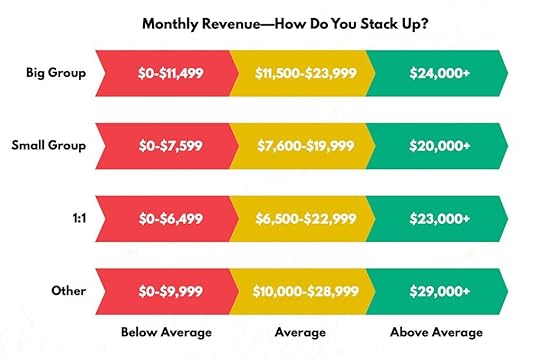
After using our “State of the Industry” guide to evaluate your business, focus first on the areas where you have lower-than-average performance.
But don’t guess about how to fix your business—work with a Two-Brain mentor who understands the metrics and can tell you exactly how to make improvements fast.
When a mentor has your business metrics, that expert can clearly see the top priorities for growing your gym.
For example, if a gym has great retention but few clients, we know that we can prioritize marketing.
You’ll reach your goals faster with a coach.
A goal, a plan and someone to hold you to the plan—that’s what we provide at Two-Brain.
And not everyone needs the same thing at the same time.
But the right thing at the right time will change your life.
Do science: Get the “State of the Industry” report.
The post Good Business Is a Science appeared first on Two-Brain Business.
November 12, 2024
State of the Industry 2024: The Data You Need to Succeed
To watch this episode on YouTube, click here.
The post State of the Industry 2024: The Data You Need to Succeed appeared first on Two-Brain Business.
November 8, 2024
The Trigger for Off-the-Charts Gym Metrics
I’ve been digging into data from gyms lately to find “hockey sticks.”
We track all key business metrics at Two-Brain, and in our dashboard it’s very easy to click buttons and find line graphs for net owner benefit/profit, gross revenue, cash flow, expenses and so on.
The “hockey sticks” are clear inflection points when a mostly horizontal line shoots upward fast.
They’re common with Two-Brain gyms.

Here are two—the green line is monthly revenue, and the pink line is net owner benefit:

And here’s another revenue hockey stick:

So what’s going on here?
It’s different for every gym. For example, revenue spikes might be related to:
New or vastly improved marketing funnels.Upgraded sales skills.Installation of the Prescriptive Model.Better retention triggered by an airtight client journey.The addition of a new revenue stream, like personal training, semi-private training or habits coaching.A new one-on-one intake process.Addition of skilled staff members who create revenue.
The list goes on. Same deal if we dig into net owner benefit spikes or any other metric. The exact cause of the spike is rarely the same, but a unifying theme exists:
In every case, the gym owner is working with a mentor to specifically improve something.
The spikes don’t just occur. Each one is the result of an owner setting a goal and working with a mentor to create a plan to accomplish it quickly.
You know how this works: General gym goers rarely get great results on their own. They putter along and make some progress now and then, mostly by accident.
But when a great coach shows up and tells an exerciser “do exactly this right now to accomplish this goal in one month,” that person starts making rapid progress.
Business example:
“My lease is up for renewal and I need to generate more revenue.”
“No problem. You’re offering only group classes. Let’s create and market a PT program. We can get current members to book one PT session a month to drive up ARM, and we’ll put a marketing plan together to acquire new clients who want to get results fast by working one on one with a coach.
“Here are the exact steps we need to take. I’ll check in on the 10th to see if you’ve ticked all the boxes. Let me know if you need help at any point!”
That’s always where the hockey sticks come from.
It’s never a case of a gym owner “doing what I’ve always done” or randomly scoring a big win by accident.
The thing about these hockey sticks is that they aren’t followed by sharp drop-offs. You might see that if luck were part of the deal.
Example: A gym with $15,000 in revenue suddenly jumps to $25,000 because a huge local event triggers a ton of drop-ins, apparel sales and facility rentals. The next month has no big event, so revenue sinks back to $15,000—and stays there.
Two-Brain hockey sticks lead to “a new level.” Think of them like ramps. A gym owner does something huge with a mentor, and the metrics move—and they stay at the new level.
At that point, the owner works with the mentor to set new goals and address the next area of opportunity.
The cycle continues, and the gym owners serve clients better and create more great careers for staff. And they earn more personally.
Here’s a group of millionaire gym owners who follow this plan:

Do this today: Check your metrics. Do you see any hockey sticks?
If not, you aren’t doing the right things at the right time.
A mentor can fix that.
Book a call here to talk about it.
The post The Trigger for Off-the-Charts Gym Metrics appeared first on Two-Brain Business.
November 7, 2024
Focus and Accountability: The Golden Hour for the Win
To watch this episode on YouTube, click here.
The post Focus and Accountability: The Golden Hour for the Win appeared first on Two-Brain Business.
November 6, 2024
Earning $100k 3 Months After Opening His Gym
By Bryce Broome, Souris Valley CrossFit
My name is Bryce Broome, and I own Souris Valley CrossFit in Minot, North Dakota.
This is my story.
So when I started with Two-Brain, I had just become jobless. I was looking for a building. I didn’t really know how to make an LLC or do anything on the business side of how to start a gym. So I started with Two-Brain.
My first thing was to try and get a business loan. I didn’t know how to do that. So read a couple of modules and took the template from Two-Brain and created my own.
And it’s like cheating on homework. You just copy, paste and put your own stuff in. It was awesome. When I took that to the bank, I tried to make it as detailed as possible. So when I went and asked for money from them, they were just like, “People who ask for millions of dollars don’t do it this well, so we’re just gonna give you the amount that you asked for.” So that was awesome.
And then from there I basically learned everything. I was hooked up with Kourtney Brownlow, who’s been instrumental in teaching me how to start a gym.

Opening With 50-Plus Members
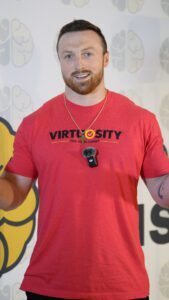
When I got the loan, we started doing build-out stuff, and we started up with our Founders’ Club, just like the Two-Brain model.
My mentor helped me open with over 50 members. That was absolutely crazy to me. I expected to grind it out and be like, “All right, we’re gonna take some losses and stuff.” But it just helped us reach out to the community and start off in a good spot.
In the first month of opening, I matched the salary of my previous job. And then within three months I had reached $100,000 net owner benefit, which was crazy to me. Everything happened super, super fast.
Then within eight months I was able to join the Two-Brain Tinker program just to just learn more. It allowed me to be like the little kid when you went and did a camp with a pro baseball player, to look up to people who’ve done it, who’ve hit $100,000 net owner benefit, who’ve hit the million-dollar mark.

Dreaming Big
It’s given me a dream—something to look up to and something to follow and to learn from. And I really wouldn’t have been able to do it without Two-Brain—definitely my coaches were there with me every step of the way.
A mentor has been instrumental for me because I was a brand new startup business. I knew that I needed someone who’s done it before, and they’ve pointed me in the right direction and taught me and put me in position to be where we’re at today—whether it’s from startup to “how do you develop a staff?” and “how do you continue to scale?” and “how to balance starting a business if you want to train?”
It’s been the best decision for me and my family because it’s put us in a great position to learn and be successful.
Souris Valley CrossFit Profile
Brand: CrossFit
Model: Prescriptive Model—group plus personal training plus nutrition/retail/events.
Location: Minot, North Dakota
Space/Lease: 2,700 square feet at about $3,000 per month
Staff: Bryce plus two part-timers who clock 60 hours and 40 hours each every two weeks
Client Count: 106
Average revenue per member: $285
Free consultation close rate: 80-85 percent
Schedule: 6 group classes a day with about seven people in each
Approximate 2024 Revenue Breakdown70 percent group20 percent personal training2 percent nutrition8 percent approx. comes from retail and special eventsAdapted from two interviews at the 2024 Two-Brain Summit.
The post Earning $100k 3 Months After Opening His Gym appeared first on Two-Brain Business.
November 5, 2024
Case Study: CrossFit Reform’s Incredible Transformation
CrossFit Reform’s improvements from 2016 to 2024 are shocking:
Net owner benefit double up.100 percent gross monthly revenue increase.Average revenue per member double up.500 percent increase in personal training revenue.Owner’s effective hourly rate increased four times—from $25 to $100.
A lot of upward movement occurred from January 2022 to January 2023:
And here are the same two metrics graphed from 2019/2020 to 2024:
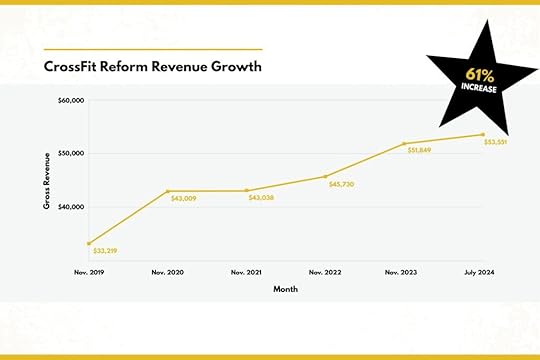

So what happened to put CrossFit Reform on the track to reach the elite level?
First, advertising didn’t happen. Owner Eric Conner has not spent significant money on paid ads in 11 years.
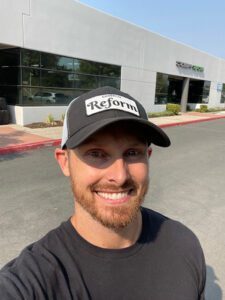
Instead, Eric worked closely with a Two-Brain mentor and “started treating it like a business.”
Looking to expand his family and be a great dad, Eric was faced with a lease renewal in a competitive market saturated with CrossFit gyms and fitness businesses.
“I can complain about high rent all I want. … At the end of the day, I’m like, ‘We just need to make more. We have so many opportunities,’” Eric said.
Guided by his mentor, Eric increased his focus. With a clear plan in place to grow his business, he took action to:
Build a team whose members could help the business grow.Delegate more tasks.Focus on CEO work.Learn to lead.Diversify his revenue streams to generate more income and profit.
Eric also joined the Two-Brain’s Tinker program to level up and surround himself with the top gym owners in the world. Members of the Tinker program work with mentors to build rock-solid, super-profitable businesses and pursue other entrepreneurial ventures if they want to.
With CrossFit Reform posting greatly improved numbers, Eric used the support of his mentor and other Tinkers to branch out and buy an AirBNB.
The result of his focused efforts?
Eric became one of Two-Brain’s 54 Certified Millionaires (and counting). And Chris Cooper invited him to join our worldwide team of mentors so he could help other gym owners find success, too.
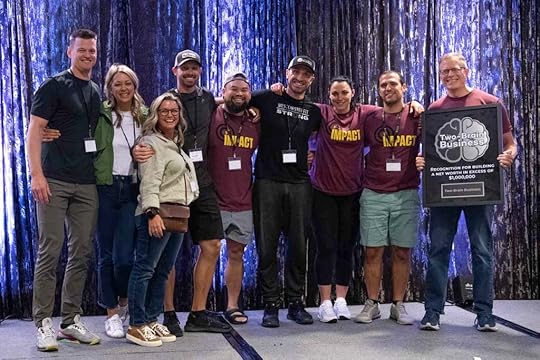 Eric Conner, fourth from the left, poses with Chris Cooper and other newly minted millionaires at the 2022 Two-Brain Summit.CrossFit Reform Profile
Eric Conner, fourth from the left, poses with Chris Cooper and other newly minted millionaires at the 2022 Two-Brain Summit.CrossFit Reform Profile
Brand: CrossFit
Model: Prescriptive Model (Eric tracked a 25 percent increase in revenue and retention after implementing the model)—group plus personal training plus specialty programs.
Location: Rancho Santa Margarita, California (between L.A. and San Diego).
Space/Lease: 5,300 square feet at approximately $16,600 per month ($200,000 annually).
Staff: 3 full time (including Eric) plus 4-5 part time.
Staff wages: Full-time employees earn between $50,000 and $75,000 with retirement match.
Client Count: 240
Average revenue per member: $250
Schedule: 10 group classes a day with 8-15 people each (about 50 classes per week)

Approximate 2024 Revenue Breakdown70 percent group20 percent personal training8 percent youth 2 percent nutrition, older adults
Key Quotes From Eric Conner
Mentorship
“I started following Chris Cooper and a lot of his ways. I tried to do it on my own for a couple years and really realized I didn’t know what steps to take at what times anymore. And that was really when I started up—when I got myself a mentor. I did my intro call with Coop and everything, and it was amazing.”
“I had taken my business as far as I could without a mentor. I joined Two-Brain and have never looked back.”
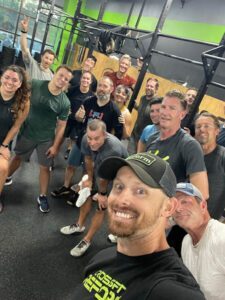
Sustainability
“I knew that if I really wanted to keep the gym, I’d have to really buckle down and make it a real business. We were coming up on our first lease renewal at that time as well. … So I knew that that was going to be a big hurdle because it’s always going up, really, and it’s not going to get any cheaper out here. So it was really kind of like a ‘crap or get off the pot’ type thing, where we had to just buckle down.”
“I absolutely love what I do. I look forward to waking up and doing what I do. We change lives on the daily. I love our team. Like, if I really want to keep doing this, we need to make it sustainable.”
Revenue Streams
“In our No Sweat Intro—our intro when we meet the people and talk to them—we literally say, ‘Would you prefer training in a group or one-on-one training with someone?’ … That question changed our whole landscape because half of the people I thought that would like group were like, ‘Well, I prefer one-on-one.’ Or maybe it starts with one-on-one for a lot longer. And that just completely changed how our PT offerings went.”
Additional Resources
Click here for the podcast.
Click here for the podcast.
The post Case Study: CrossFit Reform’s Incredible Transformation appeared first on Two-Brain Business.
November 4, 2024
Want to Make $100k? Here Are 3 Gym Business Models That Work
To watch this episode on YouTube, click here.
The post Want to Make $100k? Here Are 3 Gym Business Models That Work appeared first on Two-Brain Business.
November 1, 2024
Golden Hour: How Eric Conner Adds Clients in 60 Minutes a Day
The Golden Hour Challenge starts today.
For the next six weeks, Chris Cooper will tell you exactly what to do each day to build your business. As you check off tasks, you’re going to turn simple habits into incredibly valuable entrepreneurial skills.
Here’s how to join:
Ensure you can set aside just 60 minutes a day.Join or head to the Gym Owners United group.Follow Chris’s instructions each day for six weeks.
Your rewards:
To give you an example of what the Golden Hour looks like when used by a top gym owner, here’s a quick case study:
Gym Owner: Eric Conner
Business: CrossFit Reform in Rancho Santa Margarita, Calif.
Experience: 11 years in business.
Time Using Golden Hour: 4 weeks as of Oct. 17.
Time: Monday, Wednesday, Friday at 7 a.m. after 6-a.m. PT client; Tuesday, Thursday at 6 a.m. before the kids wake up.
KPI Data
“In four weeks we’ve grown 5 percent of our headcount, which is our total member count, just from reaching back out to these people (former members).”
Golden Hour Process
Take a look at the Golden Hour Framework, and then I’ll show you Eric’s real-life activities:
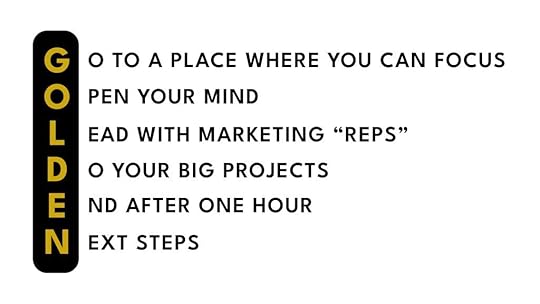
Eric Conner’s Exact Golden Hour Tasks
G: Nearby coffee shop—seat in the corner, facing away from traffic—or home office.
O: Brain dump—Eric takes two to five minutes to write down everything in his head, including “to do’s” and stuff from the day before.
L: Reach out to former clients, connect with leads who did not convert, check in on current members (including those who have been absent), write to a 3,000-person email list and repurpose the content to a blog and social media.
D: Eric was only four weeks into his process when we spoke, so he was focused on getting marketing reps and creating content. But he would place things like improving the 90-day client journey in the “big projects” spot.
E: Eric’s done in 60 minutes.
N: Eric will write down process refinements for the next Golden Hour, list important tasks from the brain dump that need to be addressed, and set out clear next steps for the next day—such as “create social posts from interview with member.”
Key Quotes From Eric
“Refining my own personal time has been huge.”
“Trying to do too many things inefficiently—or the wrong things—doesn’t help.”
Join the Golden Hour Challenge
This quick profile shows exactly how a gym owner uses 60 minutes a day to get measurable results.
Could you use the same process? Yes.
To see what the challenge is all about, head to Gym Owners United and check out Chris Cooper’s instructions.
Eric added 5 percent to his member total in about 30 days—what could you accomplish in six weeks if someone told you exactly what to do to build your business fast?
“The Golden Hour” by Chris Cooper is available here.
The post Golden Hour: How Eric Conner Adds Clients in 60 Minutes a Day appeared first on Two-Brain Business.



